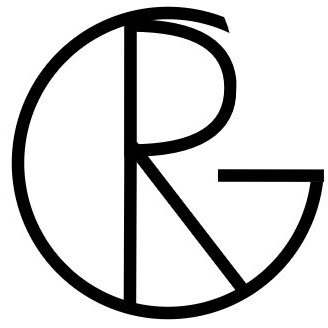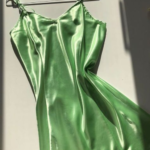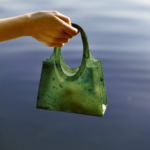In a world increasingly concerned about our choices’ environmental and social impacts, sustainable fashion has emerged as a vital movement within the industry. No longer can we look at fashion purely as trends or aesthetics. Making conscious choices that resonate with our values is more important than ever. Sustainable fashion is a step towards a greener, more ethical wardrobe that benefits us and the planet
With the amount of information available today, filtering out the right information is difficult. Therefore, I decided, that for this post, I would rewrite one of my old posts from three years ago on the basics of sustainable fashion.
Here is the improved version of that post.
Fashion Today
In the fashion industry, trends come and go faster than ever before. The industry stands as a creative powerhouse, driving self-expression and cultural identity. Since the early 2000s, the consumption of fashion has increased by more than 60%. To compete with the consumers’ constant desire for new items, brands are introducing new collections monthly, and some even weekly.
The fast fashion industry dominates the fashion landscape and revolves around producing trendy, affordable clothing in order to meet the ever-changing trends. The fast fashion business model prioritizes short, quick production cycles, low costs, and high inventory turnover, leaving little room for the environment or society.
However, the increasing pressure of consumption has a detrimental effect on both. The fashion industry is notorious for its resource-intensive practices. From extreme water and chemical usage to energy consumption and waste generation. The business model promotes a culture of overconsumption and disposability that contributes to enormous piles in landfills, some of which can even be seen from space.
In addition, the fashion industry’s relentless pursuit of cutting costs has caused severe unethical labor practices in which workers are subjected to unhealthy and unsafe working conditions as well as very low wages. Additionally, the fashion industry also exploits animals for their skin and fur to create many of the products.
Unsurprisingly, the fashion industry is regarded as one of the most unsustainable industries.
Understanding Sustainable Fashion
It is rather obvious that the current fashion is not sustainable or ethical. So what is?
Sustainable fashion has many descriptions, definitions, and interpretations, but overall, it refers to clothing that is designed, produced, consumed, and disposed of in a way that it minimizes the negative environmental impact and prioritizes the ethical treatment of the workers.
There are many different terminologies used for sustainable fashion. Think ethical fashion, eco-friendly fashion, and circular fashion. These terms all have different descriptions, but they come down to the same thing: to reduce the impact and improve the conditions for workers and animals.
Sustainable fashion relies on three fundamental pillars: environmental, social, and economic.
In the fashion industry, the environmental pillar focuses on reducing the fashion industry’s carbon footprint, minimizing resource use, and diminishing waste generation. This is often done by using eco-friendly or recycled materials, adopting different production processes, and promoting circular business models.
The social pillar addresses fair labor practices, workers’ rights, and safe working conditions. Brands that value social responsibility ensure that their workers are paid fairly and treated with respect.
Last, the economic pillar emphasizes creating a fashion economy that’s equitable and viable for all stakeholders. It encourages investment in local communities, promotes craftsmanship, and supports small businesses.
How can we be more sustainable?
Now that we understand the concept of sustainable fashion, the question is what we can do to be more sustainable ourselves. Here is a list of elements to consider when you would like to make more conscious choices.
Materials
The choice of materials in a garment has a huge impact on its sustainability. Materials like hemp, organic cotton, and recycled fibers significantly reduce the environmental impact. These materials use fewer chemicals, water, and energy during production, preserving natural resources and protecting ecosystems.
Minimize Waste
The fashion industry is extremely wasteful. Embracing the principle of minimizing waste means shifting away from the ‘wear and discard’ mentality. We can do this by investing in higher-quality and timeless pieces that can withstand trends and seasons, so they will not end up in landfills. Another solution is to care for our clothes and repair them instead of replacing them.
Second-hand and Vintage
Capsule Wardrobe
Create your own capsule wardrobe! This is a wardrobe where all pieces are of high quality and have timeless designs. By streamlining your closet and focusing on quality over quantity, you reduce the demand for excessive production. A capsule wardrobe encourages mindful purchasing and a deeper appreciation for the items you own.
Support Sustainable Fashion Brands
When shopping for new clothes, support sustainable fashion whose goals align with your own values. By shopping at these brands, you encourage the industry to move in a more responsible direction. Whether it’s a commitment to fair labor practices or a dedication to reducing carbon emissions, your support fuels positive change and encourages others to follow suit.
How To Recognize Sustainable Fashion
Supporting sustainable brands is all fun in games, but how can we actually recognize sustainable fashion brands?
Nowadays, promoting oneself as sustainable or green is highly profitable for fashion brands. Consumers are aware of the fashion industry’s impact and wish to make more conscious choices. However, fashion brands use this desire to greenwash and label garments as sustainable, even though they aren’t. Therefore, it is important to understand what you should look for.
Here are five tips to help you differentiate between genuine sustainable fashion brands and brands that are greenwashing:
Transparency
Authentic, sustainable brands are transparent about their practices, materials, and processes. Usually, you are able to find detailed information about their supply chain, material sourcing, production methods, and labor practices. Brands that greenwash, on the other hand, often use vague or general terms without providing concrete evidence of their sustainability efforts. Some of these brands provide no information at all.
Certifications
A very important aspect that helps to identify sustainable brands is to look at whether they hold any third-party certifications from reputable organizations. Examples are certifications like GOTS (Global Organic Textile Standard), Fair Trade, and OEKO-TEX Standard 100. These certifications indicate that a brand has undergone rigorous evaluation to ensure its commitment to sustainability and ethical practices. However, be cautious as some brands might display irrelevant certification
Commitment
True sustainable brands demonstrate a long-term commitment to sustainability, rather than temporarily jumping on the eco-friendly bandwagon. Brands that have long-term commitments will consistently improve their practices over time, and their efforts go beyond marketing and temporary initiatives.
Life Cycle Assessment
Sustainable brands consider the entire life cycle of their products from raw material sourcing to manufacturing, distribution, and even disposal once it is used. On the other hand, brands that greenwash often only consider a small part of their product’s life cycle, which creates a misleading positive image.
Avoid buzzwords
Nowadays, social media is very important for fashion brands, and those that greenwash tend to use rather vague and trendy buzzwords without providing evidence. Examples of buzzwords could be “100% eco-friendly,” “natural,” or “green.”
Sources
All pictures used contain a link to the source.
If you are interested in reading the first post on the basics of sustainable fashion, please click here. But be aware! It is terrible.









